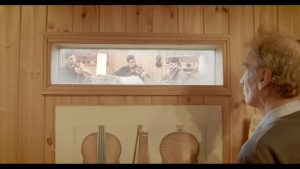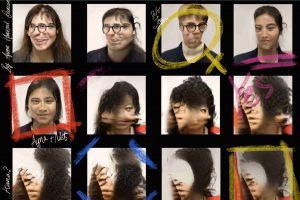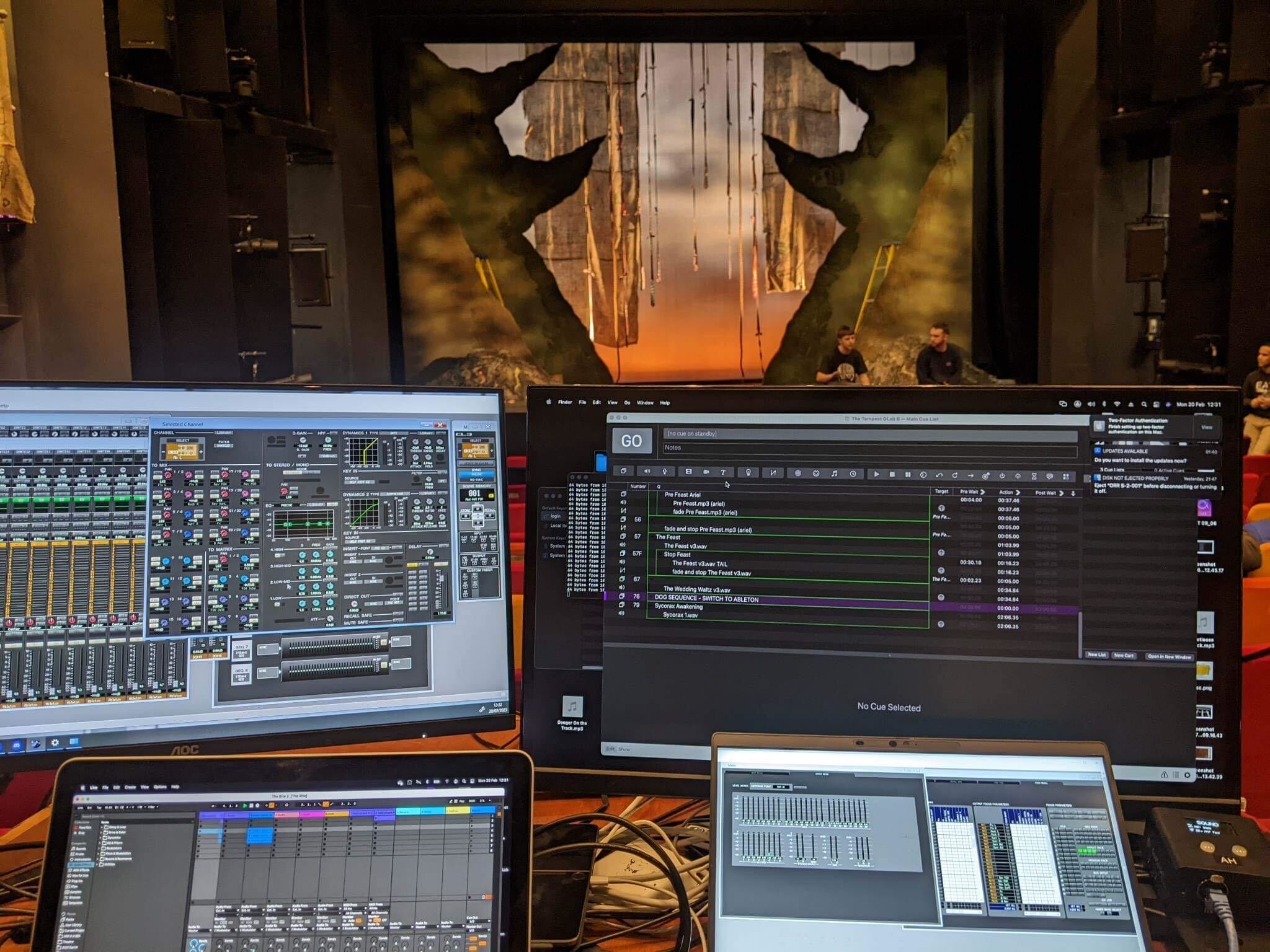
“The bones and guts are on display”: Behind the sound and stage design of The Tempest
by Julia Males | February 21, 2023
“The isle is full of noises,
Sounds and sweet airs that give delight and hurt not.
Sometimes a thousand twangling instruments
Will hum about mine ears”
(3.2.148)
The first time I heard about the upcoming Oxford Playhouse production of The Tempest, directed by Costi Levy, was during an intermediate sound designers’ workshop. Alva Orr, sound designer, physics lecturer and sometime PhD student was teaching an interested few how to operate and experiment with contact microphones.
Alva’s plan for the show was to pair contact microphones with scrap material, which detect the noise emanating from ‘structure-borne sound’. They don’t detect speech (air-borne sound), but any sound that hits the object gets resonated. So, the sounds these microphones amplify are abstract: humming, buzzing, swooping. They mimic what it would sound like to be inside the object, a bit like a stethoscope. These microphones can be attached to props: poles, plastic sheeting, strips of metal. As the ensemble move and manipulate these items onstage, the microphones fixed to the props capture and amplify their sounds and textures. From the back of the auditorium, Alva then processes and balances the sounds, adding reverb and pitch process. The effects are raw and more unpredictable than pre-recorded soundtracking. It’s a radical restoration of live control to the performers of The Tempest, which hasn’t been done before in a university show.
A sound technician’s work typically takes place within a broader project to make everything behind the scenes neat, quiet, tucked away. They wear black, aiming for subtlety and seamlessness. This is the case for most shows in Oxford in Orr’s experience. They tell me that typical sound design is “all about being discreet: ‘How can I get the sound I want while also being invisible? How can I do it in a way which melds with the world of the show?’”. At least for now, Alva seems done with that. “Before, I’ve taken a lot of time to select microphones, so they can be as discreet as possible. This is the complete opposite. It can be blatantly obvious. It can be very visible, and it’s a rare opportunity to do that. And that’s what Izzy [Kori]’s design, and Costi [Levy]’s direction allows me to do”.
Ultimately, in this production, “the bones and guts are on display. There’s a microphone [and] the object. And it’s not as realistic”. The Tempest is turning the anatomy of its theatre inside out. I love this idea of us seeing this raw, working material, and knowing that what we’re hearing during the show is this dynamic composition.
I ask Alva why they chose to work on The Tempest. “The Tempest is every sound designer’s dream” because “it’s a very early work that contains reference to sound design. The first stage direction features explicit instructions for sound in a way that not that much media of that era does”. Alva picks up their phone, gets the script up, and shows me the opening:
‘A tempestuous noise of thunder and lightning heard.
Enter a Shipmaster and a Boatswain.’
“So that fact that Shakespeare wrote something so well suited to what we have today, makes it a very special, and unique script.” The Tempest is not only an aurally-attuned text, but one which makes us interrogate what we perceive as edges, borders, boundaries. Centring scrap objects as powerful instruments of theatrical effect enacts this on the level of design.
I ask Alva why they chose Foley, a technique in which sound effects are generated using props. They explain that it crucially centres “the visual connection”. “Foley is normally just a technique for acquiring sounds. Film sound designers are usually foley artists who go away behind closed doors, in a studio, recording sounds you need and dubbing them over. That’s to make them sound realistic. In theatre, Foley is more entertaining because it has the visual connection.”. It’s striking to know that the live physicality of the actors is what decides the play’s soundscape.
Alva continues: “you can have sounds which really respond to the action itself. Recordings can’t, or at least require a huge technical burden. You need to know how to do these fiddly things. And you need to match the actors”. Instead, “letting the ensemble have a little bit of ownership, and dubbing on top of that, means it’s a performance”. Leaning into this unpredictability seems to become one of the production’s strengths. The Tempest is full of sounds which derive from something otherworldly, as Ferdinand wonderingly expresses:
“Where should this music be? I’ th’ air, or th’ earth?
[…]
This is no mortal business, nor no sound
That the Earth owes. I hear it now above me.”
(1.2.485)
In Orr’s design, objects reclaim their capacity to make sound. It’s all mixed on Alva’s sound deck, but what the audience see is the objects in performance. This integration of old into new is sustainable too: Orr explains that “it fits with the show’s ecological aspect as well. It’s putting a high emphasis on sustainability, on ecology. So it makes total sense to try and make sounds with scrap”. Recycled materials, ‘junk’, become the base for this new design. Orr puts it simply; “We don’t wanna be taking this stuff to landfill… and that cyclical nature is a very core ethos to the show as a whole.”.
Junk is important to The Tempest: the show’s ethos involves using entirely upcycled, recycled materials. Speaking to set designer Izzy Kori, and the rest of the creative team, these are a few props I’ve heard mentioned:
- A bulk-bought package of second-hand formal/ suit ties
- Mycelium mushrooms, grown in Izzy’s laundry room
- Bleached bed sheets
- A Harry Potter broomstick Costi found on the road
- Blue glowing algae
- An oven shelf grid
All these items are in different ways, alive, or suffused with life. The histories of their old wearers, the old uses of the broomstick, the mushrooms and algae live on in performance. Not only is the soundscape a dynamic performance which will be unique every night, but the very set and stage of The Tempest becomes a breathing entity. It’s ecological. It’s nice.
One Saturday morning, I arrive at the Clore studios to sit in at a rehearsal, to get a sense of how these elements of junk and sound will come together onstage.
“Shake it off. Come on,
We’ll visit Caliban, my slave, who never
Yields us kind answer.”
(Prospero, 1.2.369)
Costi, along with her co-directors Debbie and Celine, are figuring out the visit to Caliban’s cell in Act 1 Scene 2. Costi explains to me that they’re using sheets of fabric and metal poles to construct a prison. It’s a case of devising, I’m told, as Costi nestles herself into the fabric to experiment. It’s a case of trial and repetition, and all the while, Alva is on the floor with an elaborate setup: a mixing board, a MacBook, and a large sound bar speaker. They’re playing spooky, metallic noises which hum through the room.
“See what feels natural, and we’ll play,” Costi suggests. Alva clicks their fingers to provide a tempo. The process is a musical and physical collaboration: this makes the devising process rhythmic, beating. The ensemble experiment, working out the construction, of Caliban’s prison. They figure out the movements they want, and Alva stands up holding a metal pole (“I’m not quite sure what it is, but I found it in a charity shop somewhere. Might be a clothes rail”). It’s a nondescript, hollow tube of metal, and because the microphone is fixed to it, there are humming, metallic rings emanating from the speakers. The microphone senses motion; the sound we hear changes depending on the rotation of the rail itself. Twisting the rail creates creaking drones, distorted and low. To depict the building of the prison, the ensemble raise three huge pieces of sheeting, connected to the sound-poles which become floating fabric walls. They’re playing with agency: “Can it come from Caliban’s vision, not theirs?”. They develop something sudden: Prospero shouts “Caliban!”, and the fabric sheeting is pulled upwards. The poles are raised, arch-shaped. “Come forth!”, and Caliban strolls forward.
The rehearsal over, the right movements found, the group disperses, and I feel lucky to have witnessed a session in which a team of creative people used modern tech and old material to create something new. As a sound designer myself, I think it’s an underrated skill which can transform student theatre. With The Tempest, it’s no longer invisible: instead, the play supports a sense of celebrating junk, reclaiming rubbish and recycled materials, and actually listening in. And I can’t wait to hear it.
Alva Orr’s design portfolio and equipment can be found on their website: www.fishlasers.co.uk
The Tempest is showing at The Oxford Playhouse from 22nd to 25th February. ∎
Words by Julia Males. Photography by Alva Orr
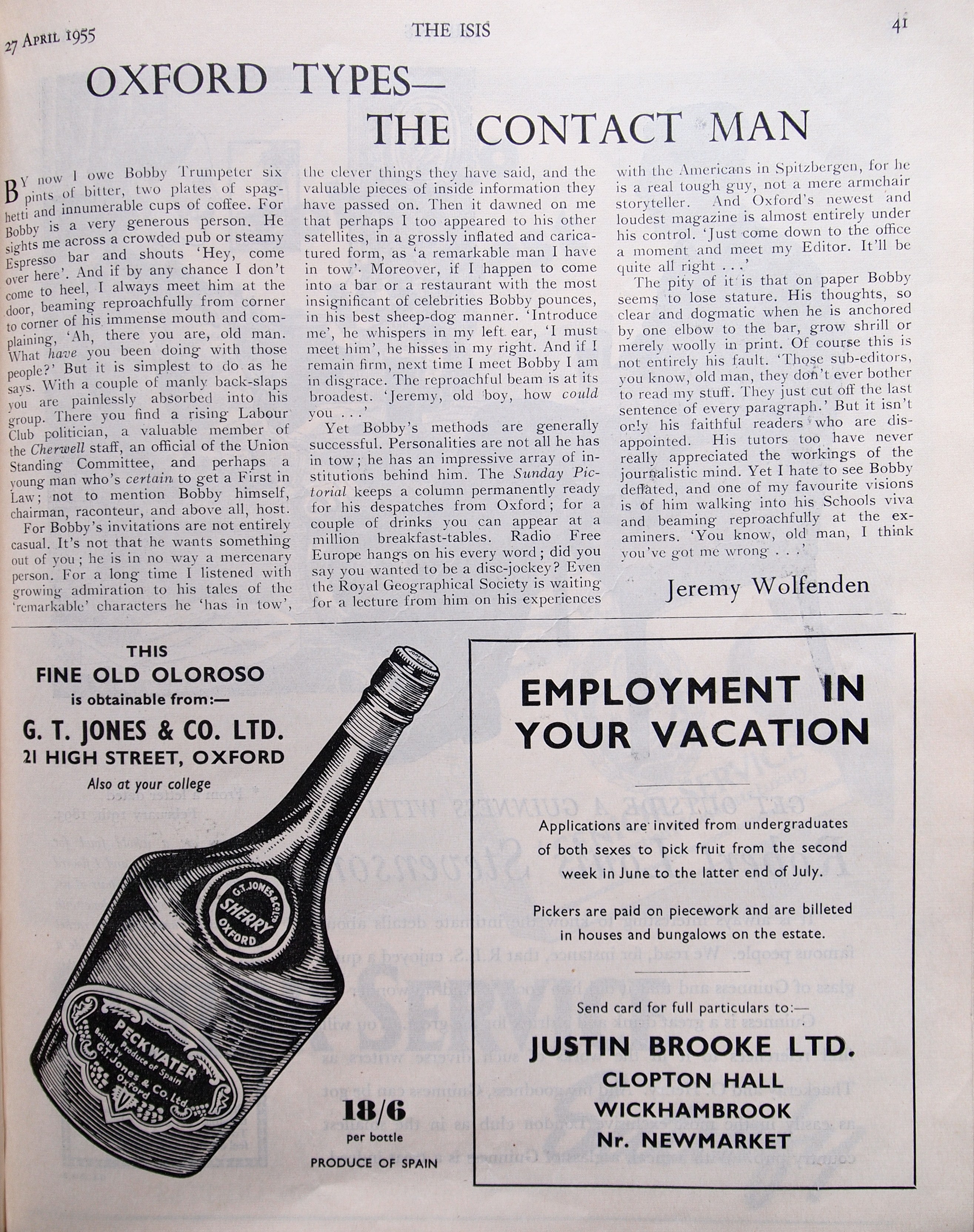
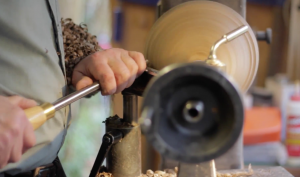
![Artist of the Week: Izzy Kori 342866687_167133812658305_2751687920373499534_n[78]-min](https://isismagazine.org.uk/wp-content/uploads/2023/05/342866687_167133812658305_2751687920373499534_n78-min-200x300.jpg)
